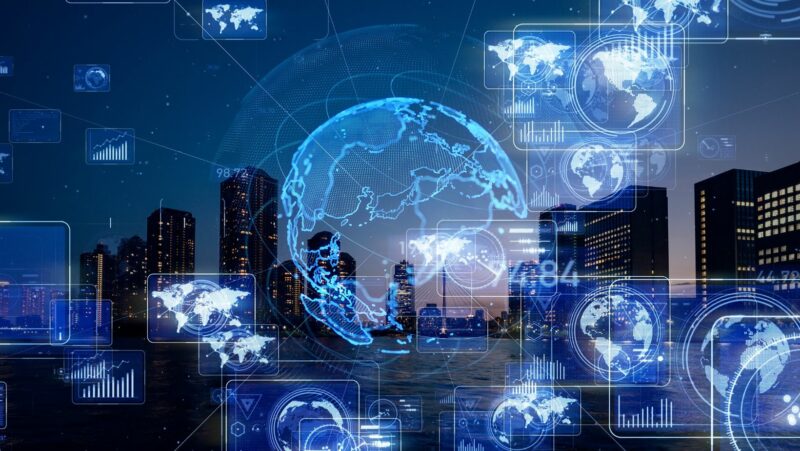
In recent years, technology and innovation have helped provide better weather services. The National Weather Service has been able to improve its forecasts by using data from the Global Forecast System as well as computer models in order to be more accurate with their prediction times. Technology is also allowing for improved satellite imagery which will help with these predictions.
The world has become more connected, and with that comes the ability to monitor and predict extreme weather events. Weather forecasting is no longer a process of simply being able to forecast for two weeks out or even one month. Experts are now able to estimate hurricane tracks up to 12 days in advance with advanced detection systems such as radar imagery from satellites. There’s also help from new technologies like drones which can provide real-time images of major storms before they hit land while bringing forward information on their size, speed, path and other data points…
Weather forecasting has changed a lot over the years. New technology and innovations are helping provide improved weather services. Read more in detail here: how has technology changed weather forecasting.
New forecasting methods and communication networks are opening up new possibilities for improving public weather services. It’s owing to modern WeatherTech technology and advancements such as wireless connectivity, nowcasting systems, digital database forecasting, and next-generation workstations, among others.
This essay emphasizes the importance of creativity and technology improvements in the distribution of weather service information.
Forecasting using a Digital Database
Most meteorological agencies employ numerical weather prediction output in their conventional forecasting methods. They use these technologies to create reasonable, text-based, and weather-element forecast solutions.
Such a procedure is time-consuming, labor-intensive, and product-oriented. Scientific developments and technology advancements aid in the accuracy and specificity of meteorological alerts and predictions.
Weather service providers now have comprehensive predictions in visual, digital, and gridded forms because to the advancement of high-speed dissemination methods and computer technology. The quantity of information that service providers may send to the community is limited by conventional means such as text forecast.
Hydrometeorological predictions may be more thorough and accurate with the use of digital database forecasting. It’s a fantastic application of weather technology. Such technologies also aid in the successful integration of forecast service delivery and distribution.
Tomorrow platform has released a new API that may help you get accurate, dependable, and rapid weather data. These technologies provide you the freedom to combine your data source with any system, application, or program you choose.
Both Environment Canada and the US National Oceanic and Atmospheric Administration employ digital database forecasting technologies for their everyday predictions. Many industrialized countries are developing or adopting database-based forecasting systems.
https://pixabay.com/photos/anemometer-weather-station-3977718/
Systems for Nowcasting
In terms of complexity, there is a broad spectrum of nowcast systems. Several meteorological service companies are working on next-generation and novel nowcasting technologies.
The nowcast technologies range from detecting radar echoes to using uncertainty forecasting algorithms. For expanding the nowcasting time horizon from 0-1 hour to 3-6 hours, sophisticated systems often use a mix of probabilistic prediction methods and NWP output.
Some systems integrate lightning and satellite data, while others employ remote sensing platforms. These systems, on the other hand, are often challenged in terms of maximizing the forecaster’s function in the nowcasting process.
The inclusion of feedback and real-time verification to forecasters is an important feature that requires further attention. A key strength of nowcast systems is the development and dissemination of hydrometeorological predictions in multiple forms. It will aid in the development of a timely and efficient service delivery system with far-reaching effects.
Applications and Systems in Information Technology
Meteorological services have been using the internet from the beginning. Despite the fact that practically all service providers have websites, the way information is disseminated differs between platforms.
Customers may get predictions and alerts from these service providers over the internet. They enable them to provide climate data to business partners, clients, and the general public in a digital and visual style. Such knowledge could not have been disseminated in any other way.
The expanding of the service delivery horizon is another important component of WeatherTech that we should not overlook. For example, a few metrological services have dedicated media web sites that you may visit on your smartphone and that cater to their special demands.
In partnership with the aviation sector, another meteorological service provider has proposed an aviation-focused program. It aids in the assessment of connection delays caused by weather-related concerns.
It’s worth noting that the progress of public weather service distribution is linked to the introduction of new communication and information technology. These include, but are not limited to, the following:
- The GPS (Global Positioning System) is a satellite navigation system that (GPS)
- Technologies for wireless communication
- Internet
- Information systems based on geography (GIS)
- Networks of mobile communication
By implementing the aforementioned advances, it will be easier to give weather alerts and predictions in a variety of forms. It’s especially important to fulfill consumers’ requests for accurate and exact environmental data.
WeatherTech is on the rise.
WeatherTech is also helping to integrate the delivery and distribution of public weather services. Another emerging component is the usage of VodCasts and PodCasts, which is assisting in the sector’s ongoing strengthening.
To summarize, meteorological services will benefit from the introduction of novel and technologically sophisticated communication networks and prediction systems. They will assist in increasing efficiency and providing better information to end-users.
Digital database forecasting can help with the integration of public weather service forecast delivery and dissemination. It’s important to remember, though, that digital forecasting is constantly developing as new communications and weathertech capabilities arise.
It’s also worth noting that the next-generation forecast workstations offer novel approaches for assimilation of large amounts of observational data. It will aid forecasters by using information processing methods and innovative visuals.
Watch This Video-
The advancements in meteorology have been a step forward in providing better weather services. The technology has helped provide more accurate and reliable forecasts to the public.
Frequently Asked Questions
How has technology improved weather?
A: Technology has improved weather in many different ways. For example, with technology we are able to determine the amount of rain that is falling or will fall by measuring droplets rather than relying on estimates from previous data gathered. Another way technology has helped improve weather is through forecasting and predicting storms so people can prepare for them
How technologically advanced tools help in predicting weather today?
A: The tools that are used to predict weather today use both science and technology. They take in a lot of data like wind speed, humidity, temperature and pressure levels as well as air quality reports from the US governments Environmental Protection Agency. This is then used to model how the atmosphere will react over time.
How is the National weather Service using technology?
A: The National Weather Service of the United States uses technology to monitor and forecast weather. They use satellite imagery, radar applications and computer models to report on current conditions as well as long-term forecasts for various cities. Technology has also allowed them to adjust their methods for communicating with people in order for better efficiency rates.
Related Tags
- instruments used to predict weather
- weather technologies
- meteorology
- weather. technologies virus
- meteorological discoveries













